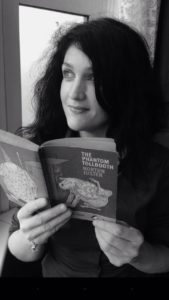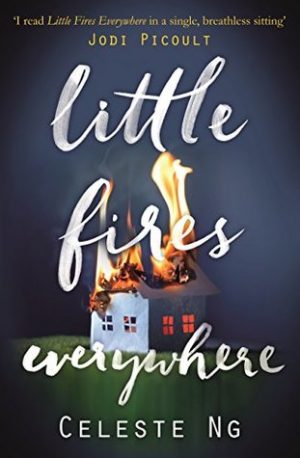The teenage Pearl and her artistic mother Mia move into a rented house owned by a wealthy family in a smarter area of the same Ohio neighbourhood. The lives of both families become entwined in healthy and not‐so‐healthy ways in a deceptively simple tale about motherhood, belonging, responsibility, and standing up for what you believe in.
The book opens with the Richardson kids watching from over the road as their house burns down and their bath‐robed mother is trying to extract information from the firefighters. Lexie has had a sleepover with a friend where they talked of a baby who apparently had two different names; Moody is cagey about where he’s been on his bike, and Trip is unusually thoughtful. Mrs Richardson has temporarily forgotten that Mia and Pearl came by her house in their little car the night before. This is Shaker Heights ‐ a well to do area where residents care about how their front gardens and porches look, send their offspring to the best schools, have their houses cleaned and meals cooked by housekeepers and do not expect anything out of the ordinary to happen. Obviously it just has. The three adolescents immediately suspect their youngest sister Izzy, who is nowhere to be found.
While these opening few pages hold the clues to the preoccupations and themes that play out over the course of the novel, the rest of the book is a flashback. Not a thriller or a whodunnit, more a slowly developing portrait of a group of people who come to be defined by their thoughts, beliefs and actions. Characters are set up deliberately to offer opposing views of the world: the bohemian left wing artist vs the well‐to‐do pillar of the community; the poor but adored daughter vs the privileged but ignored daughter; the desperate immigrant who abandons her baby vs the wealthy infertile woman. They are more than cartoon cut‐outs, these characters are flawed but sensitively drawn (with one exception, the unmarried Chinese mother, who seems crowbarred in to make a political point and push the plot forward).
Within the central dynamic – the clash between two families ‐ themes are friendship, coming of age, love, race, responsibility and the shifting dynamics of family – what it means to be part of a family and the perils of taking it for granted, and how a person’s true family is not necessarily the one they were born to. The tug‐of‐love subplot expands on these themes. More than anything, though, the book provides a moving meditation on the nature of motherhood.
To a parent, your child wasn’t just a person: your child was a place, a kind of Narnia, a vast eternal place where the present you were living and the past you remembered and the future you longed for all at the same time. You could see it every time you looked at her: layered in her face was the baby she’d been and the child she’d become and the adult she would grow up to be, and you saw them all simultaneously, like a 3-D image. It made your head spin. It was a place you could take refuge, if you knew how to get in. And each time you left it, each time your child passed out of your sight, you feared you might never be able to return to that place again.
It is also a powerfully reactionary book. The itinerant Mia is in many ways the central figure of the book: her status as an artist marks her out as seditious, rebellious, and she plants seeds in almost every other character that force them to re‐evaluate their assumptions, and her few words spark small acts, or ‘little fires’ that lead to enormous consequences. I was interested in how her photographs are like little poems, each one able to encapsulate in an image the perfect essence of someone.
Everything, she noticed, seemed capable of transmogrification. Even the two boulders in the backyard sometimes turned to silver in the early morning sunlight. In the books she read, every stream might be a river god, every tree a dryad in disguise, every old woman a powerful fairy, every pebble an enchanted soul. Anything had the potential to transform, and this, to her, seemed the true meaning of art.
It’s a clever, satisfying book which will appeal to the mother in readers. All the threads are nicely tied up at the end in a not entirely expected way. It would make a good book club book, and I can see why Reese Witherspoon has optioned this as a film.
Little Fires Everywhere is published by Little, Brown, 352 pages.





